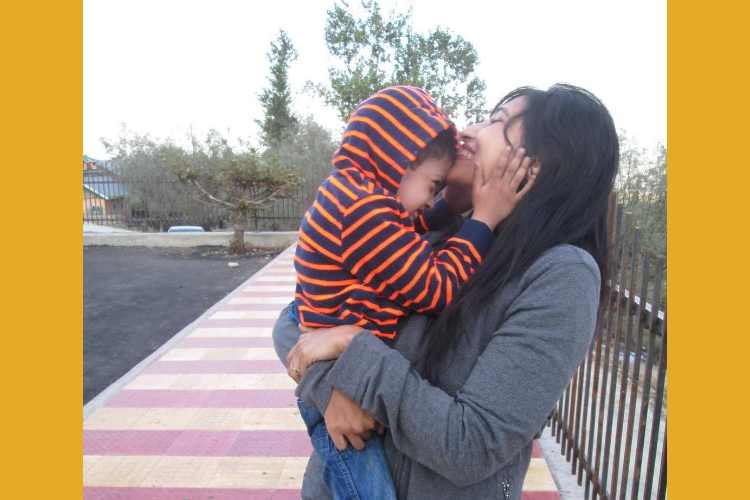From the time a child is born, there’s one thing we constantly want them to know – that they are loved! But have you ever wondered if your child is able to receive the love you share? Consider the following scenarios:
When your little one gets home from school, you ask them how their day went, but all they want is to play with you. Or perhaps, you try talking to them when they’ve had a tough day, but they’d rather cuddle up and watch some TV.
It’s totally common to feel like there are some crossed wires in communication every now and then. But learning your child’s love language could be a game changer in helping you reach out to them in the most effective and reliable way!
So what are love languages?
We each have a way that we prefer to give and receive love. In 1992, Gary Chapman defined this as our ‘love language’ and proposed that there are five main love languages which we all communicate in – quality time, words of affirmation, acts of service, physical touch, and gifts.
According to his studies, he discovered that we each have a primary love language, followed by four others that we relate to in varying degrees. Chapman believed that we are able to best feel someone’s love when they communicate it to us in the ‘language’ that we are most fluent in.
A few years later, he wrote a book about how to understand these love languages in children. A child may not be able to communicate their preferences explicitly, but there are ways to spot their love language over time. Read on to find out how you can identify the ways your child likes to give and receive love, and how to communicate in a love language that may be different from yours.
How to learn a child’s love language
To understand your child’s preferred love language, all you have to do is observe how they express their love to you! If they often say "I love you" and "You’re the best mommy!" their love language may be words of affirmation.
Another important factor is to pay attention to their asks. For instance, a little one who asks for cuddles and hugs may enjoy the language of physical touch. So let’s take a look at how you can spot and nurture each love language.
Quality Time

Spotting the love language: If your child usually asks you to play with them or looks for ways to be around you, their love language may be quality time. “Come see this, mama!” or “Can you read me a story?” are some common phrases for a child seeking quality time.
Nurturing quality time: Quality time isn’t just about being around each other. It’s about being present, listening carefully, and paying attention to your child. Schedule time to play with your kids every day or have a weekly family game night. You could even read stories to them or simply read beside each other like shumee mom Rati does. With this love language, the little things are often the big things!
Looking to host a family game night? This comprehensive game night guide has everything you need to know! |
Words of Affirmation
Spotting the love language: Does your child love it when you compliment them? Or do they enjoy chatting with you every chance they get? If you have a toddler who blushes and beams when you validate them, their love language may be words of affirmation.
Nurturing words of affirmation: Children seeking words of affirmation need to hear you say things that might sometimes be obvious to you. Saying "I love you", "I’m proud of you", and "I miss you" goes a long way.
Pretend play or creating art are great opportunities to foster natural conversations. If your child has worked on a drawing, make sure you tell them what strikes you about it. Getting specific with "I love how you’ve used green here" or "This purple makes me feel happy" could make all the difference.
Gifting
Spotting the love language: A child who loves small surprises or gets excited every time you make them ‘a special treat’ may be inclined towards gifting as a love language. Unlike the popular notion, gifting is not about materialistic pleasures. To people who speak this language, a gift is a way to show someone how you see them and how well you understand them.
Nurturing gifts: While toys, clothes, and other such gifts are good ideas once in a while, Chapman advices that we be careful and have boundaries around such gifts. Remember your child sees anything thoughtful, personal, and unexpected as a gift. Getting them their favourite chocolate, making them a paper boat or an origami animal, or even baking them some yummy cookies would all be exciting gifts!
Building the perfect gift box just got a whole lot easier with shumee’s Build Your Own Box offering! Pick toys from a curated list and get it delivered in a gorgeous box. |
Physical Touch
Spotting the love language: If you have a little one who enjoys cuddles and kisses, their love language may be physical touch. "Let’s snuggle and watch a movie!”, “Can I cuddle with you, mama?”, or a big hug when they are happy are telltale signs of this adorable love language!
Nurturing physical touch: Children who enjoy physical affection look for the safety, security, and warmth that comes from being held by someone who loves them. A bedtime cuddle and read ritual, tons of high-fives, and gentle kisses every now and then will be welcome. Playing with soft plush toys or sensory rattles are other ways that they can feel safe and comforted when you are not around.
Acts of Service
Spotting the love language: Acts of service may sound like quite a grown up love language, but it hits the spot for many children too! “Can you help me with this?”, “Can you do this for me?”, or “Thank you for making my favourite lunch!” may be some signs that your child loves through acts of service.
Want to empower your child to help out around home? A Montessori Tower might be just the thing for you! |
Nurturing acts of service: Teaching your child a craft or a skill step by step or helping out with activities they can do on their own are some ways you can express love. But stay mindful to have boundaries around how much you do for them, as encouraging self-reliance from a young age is important.
If your child asks for help, a thoughtful response may be all they need. Example: “I can help you colour, but your friend would like it so much more if you filled in that heart on their card!”
Love languages across the years

As shumee mom Amruta shares, a child’s primary love language can change over the years according to their age and specific needs. So keep looking closely at how your child communicates their love to you!
And finally, if you have a different love language from your child, don’t stop expressing yourself through what comes naturally to you too. This will give your child a chance to know who you are, and allow them to appreciate different love languages and understand different people from a young age.




